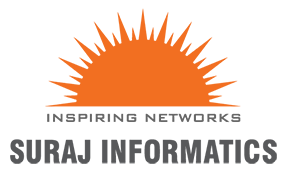Mastering Access Control: Protecting Your Digital World

Access control is a fundamental concept in the world of cybersecurity. It serves as a crucial line of defense against unauthorized access to sensitive information, systems, and resources. In an era where data breaches and cyberattacks are on the rise, understanding and implementing robust access control measures is paramount. This blog explores the importance of access control, its key principles, and best practices for safeguarding your digital assets.
What is Access Control?
Access control is the practice of regulating who can access what within an organization’s digital ecosystem. It involves managing permissions and privileges to ensure that only authorized individuals or entities can interact with specific resources or systems. Access control encompasses a wide range of technologies, policies, and procedures, all aimed at maintaining the confidentiality, integrity, and availability of data.
Why Access Control Matters
- Data Protection: Access control helps prevent unauthorized access to sensitive data, safeguarding it from theft or exposure. This is especially critical in industries dealing with personal, financial, or medical information.
- Compliance: Many regulatory frameworks, such as GDPR, HIPAA, and PCI DSS, require organizations to implement stringent access controls to protect sensitive data and ensure legal compliance.
- Insider Threat Mitigation: Not all threats come from external actors. Proper access control can also address insider threats by limiting access to only what is necessary for an individual’s job responsibilities.
- Incident Response: In the event of a security breach, robust access control allows organizations to quickly identify and isolate compromised accounts or systems, minimizing the damage caused.
Key Principles of Access Control
- Least Privilege Principle: Users and systems should be granted the minimum level of access required to perform their tasks. This limits potential damage in case of a breach.
- Role-Based Access Control (RBAC): Access is determined by job function or role within an organization. This simplifies management and reduces the risk of over-privileged accounts.
- Authentication and Authorization: Authentication verifies a user’s identity, while authorization determines what actions they are allowed to perform after authentication.
- Multi-Factor Authentication (MFA): MFA adds an extra layer of security by requiring users to provide multiple forms of identification (e.g., password and biometric scan) before granting access.
- Audit and Monitoring: Continuous monitoring and audit trails help organizations detect and respond to suspicious activities, as well as maintain compliance.
Best Practices for Implementing Access Control
- Regular Access Reviews: Periodically review and update user access permissions to ensure they align with current job roles and responsibilities.
- Implement Strong Password Policies: Enforce complex password requirements and encourage the use of password managers.
- Two-Factor Authentication (2FA) Everywhere: Enable 2FA for all accounts and systems that support it to add an extra layer of security.
- Encryption: Encrypt sensitive data at rest and in transit to protect it even if unauthorized access occurs.
- Employee Training: Educate employees about the importance of access control, security best practices, and how to recognize phishing attempts.
- Access Control Lists (ACLs) and Firewalls: Use ACLs and firewalls to restrict network access to only authorized IP addresses and ports.
- Regular Software Patching: Keep all software, including operating systems and applications, up to date to patch known vulnerabilities.
- Incident Response Plan: Develop a comprehensive incident response plan to address security breaches promptly and efficiently.
Conclusion
Access control is a foundational element of cybersecurity, crucial for protecting your digital assets from a multitude of threats. By implementing the principles and best practices outlined in this blog, organizations can significantly reduce the risk of data breaches, maintain regulatory compliance, and fortify their overall security posture. In today’s interconnected world, mastering access control is not an option; it’s a necessity for the preservation of trust and the integrity of your digital world.
